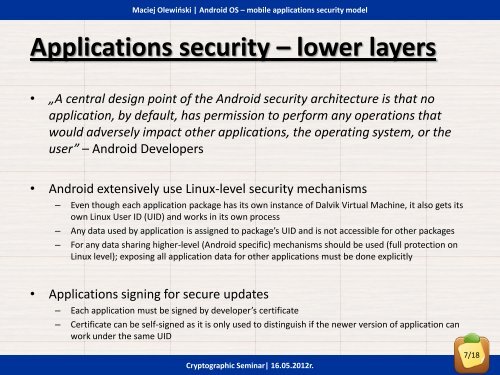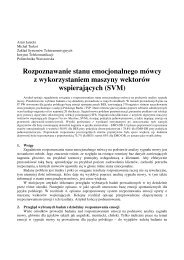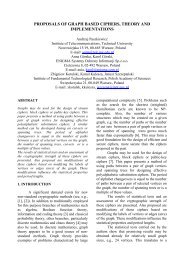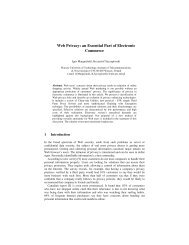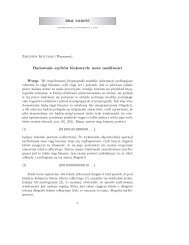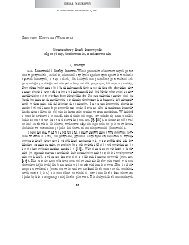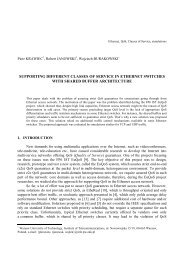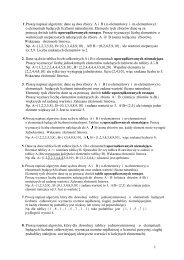Mobile applications security â Android OS (case study) - cygnus
Mobile applications security â Android OS (case study) - cygnus
Mobile applications security â Android OS (case study) - cygnus
You also want an ePaper? Increase the reach of your titles
YUMPU automatically turns print PDFs into web optimized ePapers that Google loves.
Maciej Olewiński | <strong>Android</strong> <strong>OS</strong> – mobile <strong>applications</strong> <strong>security</strong> model<br />
Applications <strong>security</strong> – lower layers<br />
• „A central design point of the <strong>Android</strong> <strong>security</strong> architecture is that no<br />
application, by default, has permission to perform any operations that<br />
would adversely impact other <strong>applications</strong>, the operating system, or the<br />
user” – <strong>Android</strong> Developers<br />
• <strong>Android</strong> extensively use Linux-level <strong>security</strong> mechanisms<br />
– Even though each application package has its own instance of Dalvik Virtual Machine, it also gets its<br />
own Linux User ID (UID) and works in its own process<br />
– Any data used by application is assigned to package’s UID and is not accessible for other packages<br />
– For any data sharing higher-level (<strong>Android</strong> specific) mechanisms should be used (full protection on<br />
Linux level); exposing all application data for other <strong>applications</strong> must be done explicitly<br />
• Applications signing for secure updates<br />
– Each application must be signed by developer’s certificate<br />
– Certificate can be self-signed as it is only used to distinguish if the newer version of application can<br />
work under the same UID<br />
Cryptographic Seminar| 16.05.2012r.<br />
7/18


